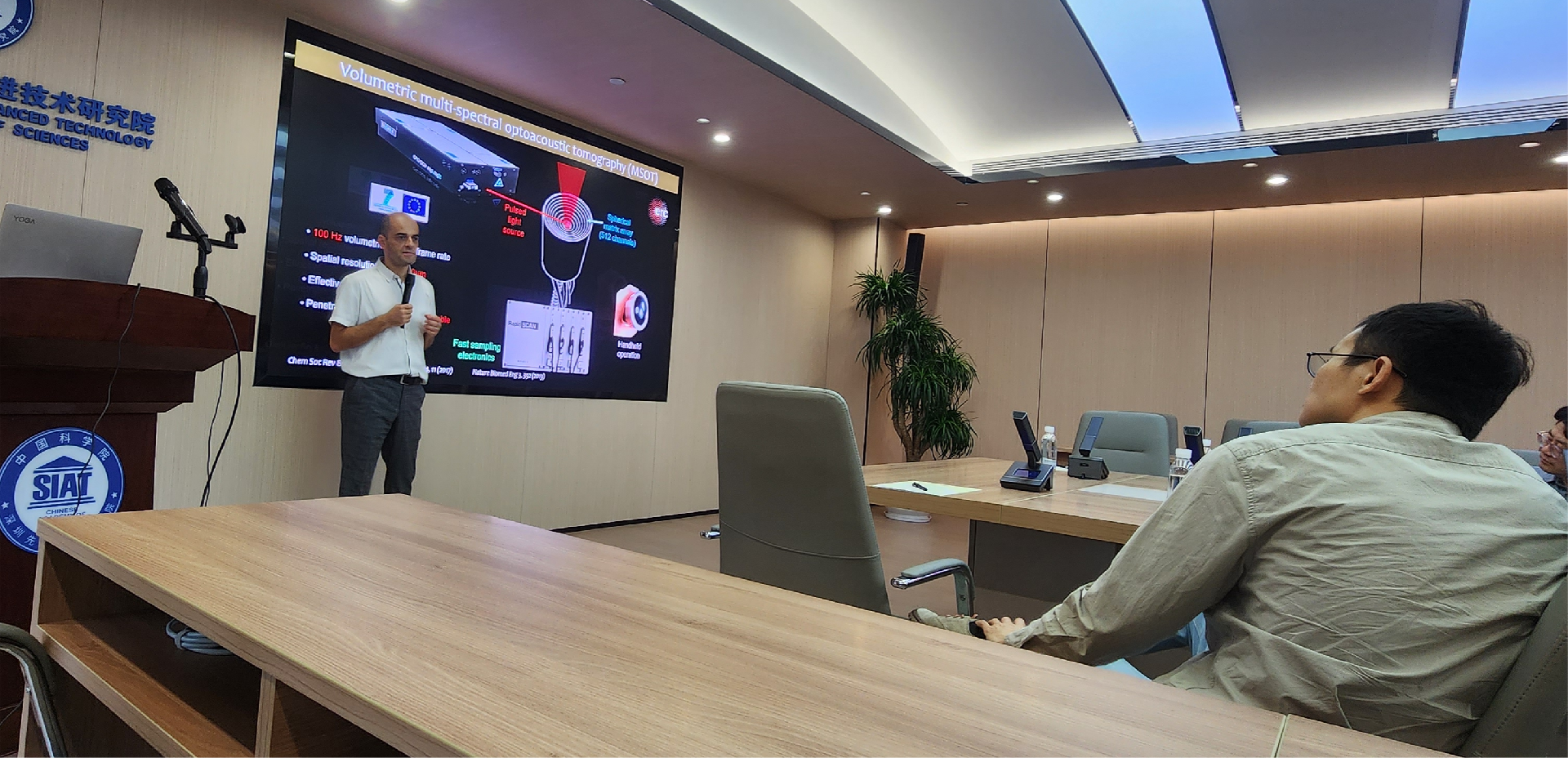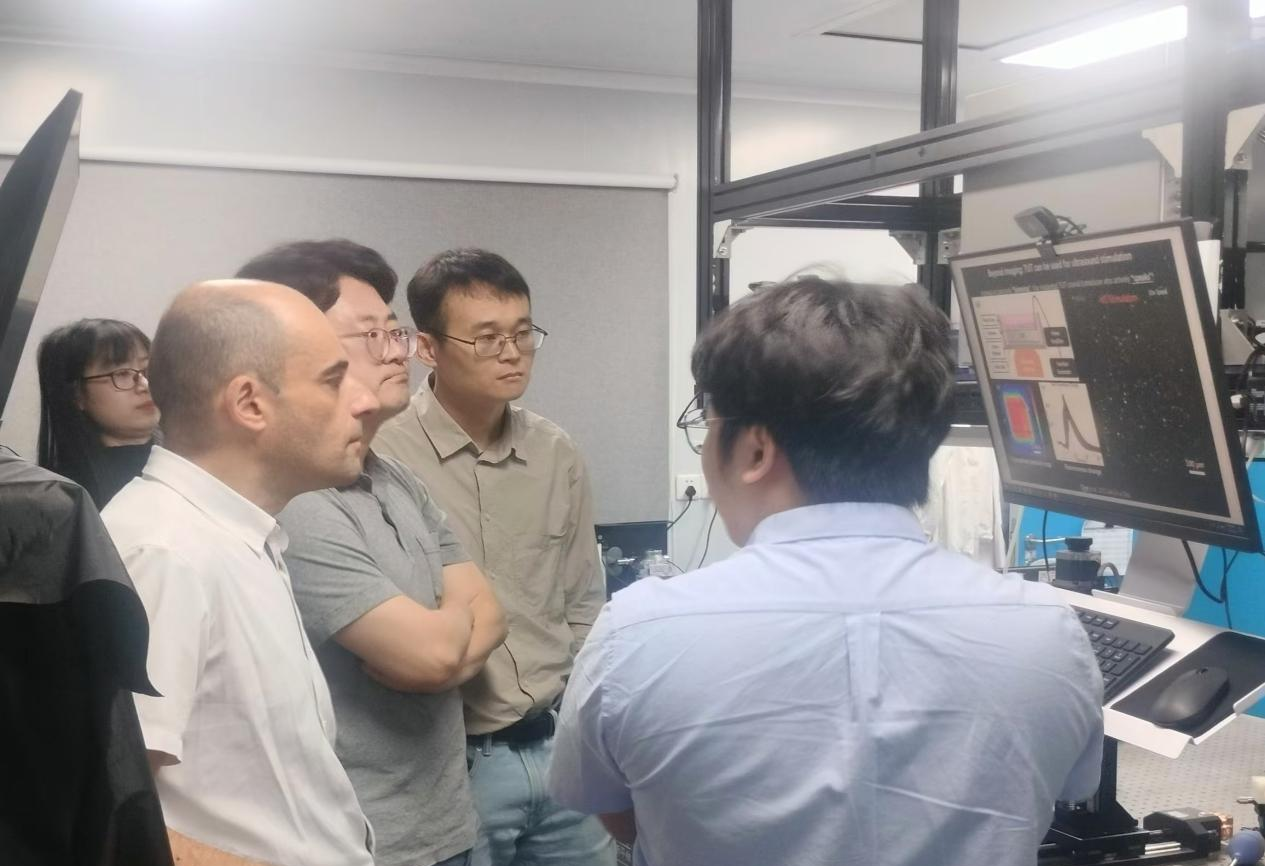苏黎世理工大学Daniel Razansky 教授于2024年11月16号应中国科学院深圳先进技术研究院刘成波研究员邀请,到访光声成像实验室交流。同时做题为“Combining Light and Sound for Scalable Brain Interrogation and Stimulation”的学术报告。
开发更有效和侵入性更小的方法来改变和观察大脑活动,有助于解决老龄化人口中的神经系统疾病和推进基础神经科学研究。基于光和超声波的技术越来越多地应用于大脑询问、调节神经活动和治疗脑部疾病等研究。
Daniel教授在报告中补充了多尺度神经成像技术,包括用于全脑成像的功能性光声神经断层扫描、定位光声断层扫描、大场多焦照明显微镜和超分辨率荧光定位成像。新方法能够在穿透深度和现有的微观和宏观功能神经成像技术所未覆盖的时空分辨率尺度上,经颅大规模记录神经和血流动力学活动和分子制剂。

Daniel教授与先进院老师同学交流

Daniel教授与刘成波研究员在实验室交流讨论
个人简介:
Daniel Razansky is Full Professor of Biomedical Imaging with appointments at the Faculty of Medicine, University of Zurich (UZH) and Department of Information Technologies and Electrical Engineering, ETH Zurich. He is also the Director of the joint Animal Imaging Center of the ETH and UZH. He was previously the Director of Multi-Scale Functional and Molecular Imaging Laboratory and Professor of Molecular Imaging Engineering at the Technical University of Munich and Helmholtz Center Munich. He earned PhD in Biomedical Engineering and MSc in Electrical Engineering from the Technion – Israel Institute of Technology and completed postdoctoral training in bio-optics at the Harvard Medical School. Dr. Razansky’s Lab has pioneered and clinically translated a number of functional and molecular imaging technologies successfully commercialized worldwide, among them the multispectral optoacoustic tomography (MSOT) and hybrid optoacoustic ultrasound (OPUS). He has authored over 200 peer-review journal articles and holds 15 patented inventions in bio-imaging and sensing. He has delivered more than 150 invited, keynote, and plenary lectures worldwide. Among his recognitions are the German Innovation Prize and multiple awards from the ERC, NIH, DFG and HFSP. Dr. Razansky serves on Editorial Boards of a number of journals published by the Nature Publishing Group, IEEE and AAPM. He is an elected Council Member of the European Society for Molecular Imaging (ESMI), serves on the IEEE Technical Committee on Biomedical Imaging and Image Processing and has chaired numerous international conferences of the OSA, WMIS, ESMI, and IFMBE. He is also an elected Fellow of the OSA and SPIE.
